"Your next drive" is a series introducing upcoming electric vehicles. From sedans and hatchbacks to SUVs, pickups, and vehicles that don't fit well into any existing category, a surprising number of genuinely ground-breaking products are heading for market from both startups and existing manufacturers. This article is not sponsored or paid for by any brand, company, or individual. All opinions expressed are our own, and we have not received any compensation for this content.
TELO Trucks is a young EV company located in San Carlos, CA. Their first vehicle is set to redefine the concept of "compact pickup" by fitting five seats and a truck bed into a footprint no larger than a Mini Cooper. Not only does this small truck feature more hauling space than Tesla's CyberTruck (or most models of traditional gas pickups), it's also slated to deliver a long range and extensive utility.
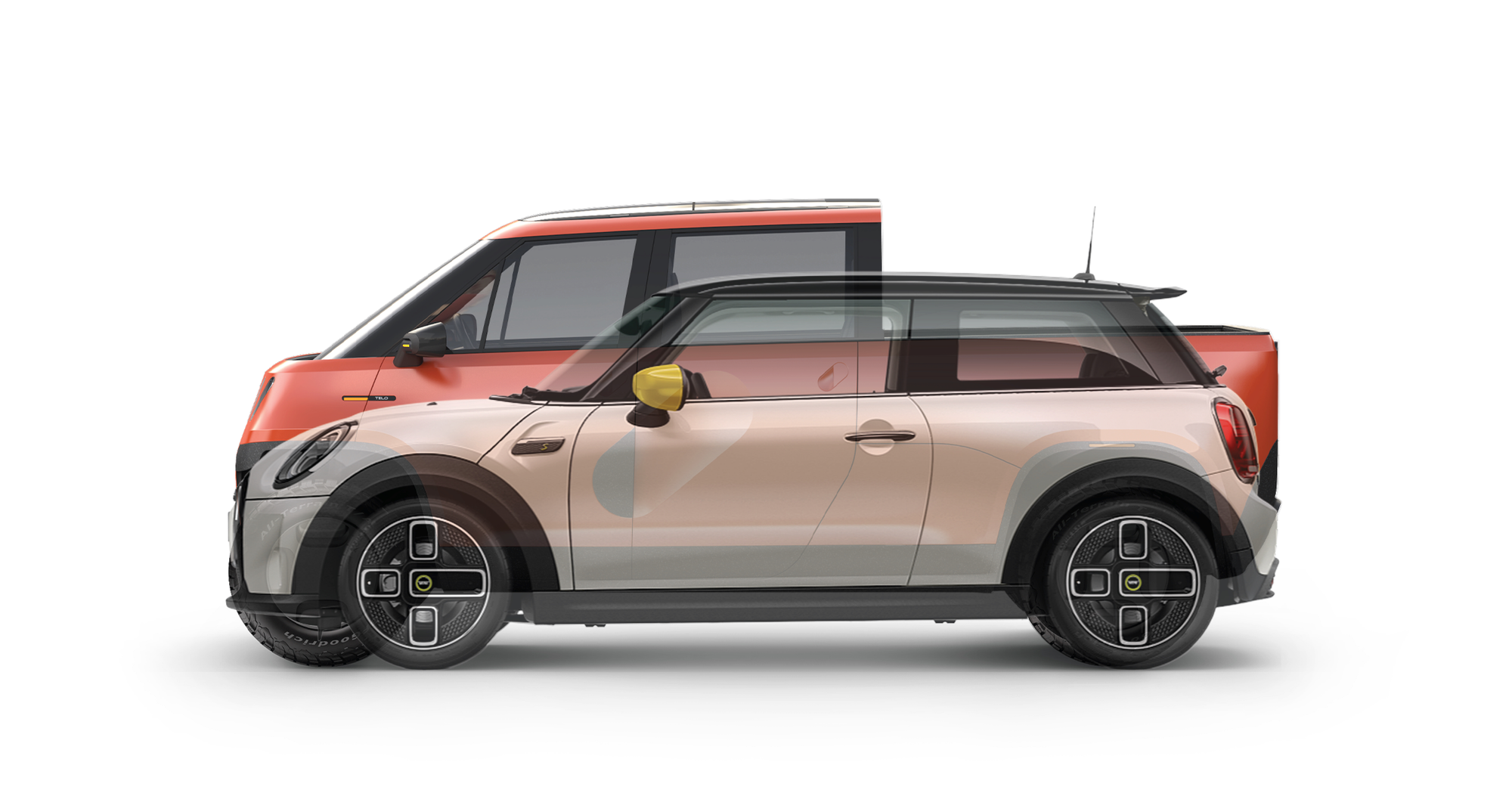
Forrest North (in addition to having a name that sounds like the lead character in an action movie franchise) is the Chief Technology Officer of TELO. He sat down with Uncharted Blue this week to talk about the trouble with the giant pickups that currently fill American streets, how TELO expects to make it as a startup in an increasingly competitive EV market, and when reservation holders can expect to drive home their MT1s.
A longtime EV fan who worked at Tesla in the early days, North says he hasn't owned a traditional gas vehicle since 1999 and is currently driving a 2010 Nissan Leaf. However, he's also a former pickup truck owner, and he points out some surprising facts about trucks in a country where pickups regularly top the lists of best-selling vehicles.
Forrest North: If you've ever lived in a big city like downtown San Francisco, and had a truck, you're everybody's friend. They want to use your truck all the time. The market research is that there are not enough trucks for people to use.
But the reason for that shortage is simple enough.
North: That's mostly because they're too big. They just don't fit in downtown areas.
Even for folks in the suburbs, says North, the overgrown pickup trucks currently marketed by Detroit are an issue. They fill up available parking areas, are hard to maneuver through neighborhoods, and represent a genuine danger for both pedestrians and other drivers.
"It's comically ludicrous how big trucks have gotten."
TELO worked on a way to pack all the utility of a full-sized truck into the space of a small car. Asconsequence North points out, this isn't a completely new idea.
North: One of the things we looked at when we were coming up with this size, is that the most popular size of truck for twenty years was a really small truck, like the original Ford Ranger or Toyota SR5. They were small, efficient, and they could go anywhere. ... Trucks have gotten absolutely, insanely huge. It's comically ludicrous how big trucks have gotten.
The TELO MT1 can be thought of as a response to the problem of providing people with the utility of a pickup without making the vehicle into a hulking brute that's dangerous to pedestrians, more likely to injure others in a collision, hard to steer through tight spaces, and impossible to park in many locations.
With a planned length of 152" (3.86 meters), it's not far off from the length of the first Ranger, or a host of small pickups that were the most popular vehicles of their time. Though TELO has been uniquely efficient in using the space that an electric vehicle makes possible, like shortening the hood to provide more interior room, this isn't so much an entirely new category of vehicle so much as it is a resurrection of what was once a very common type of truck.
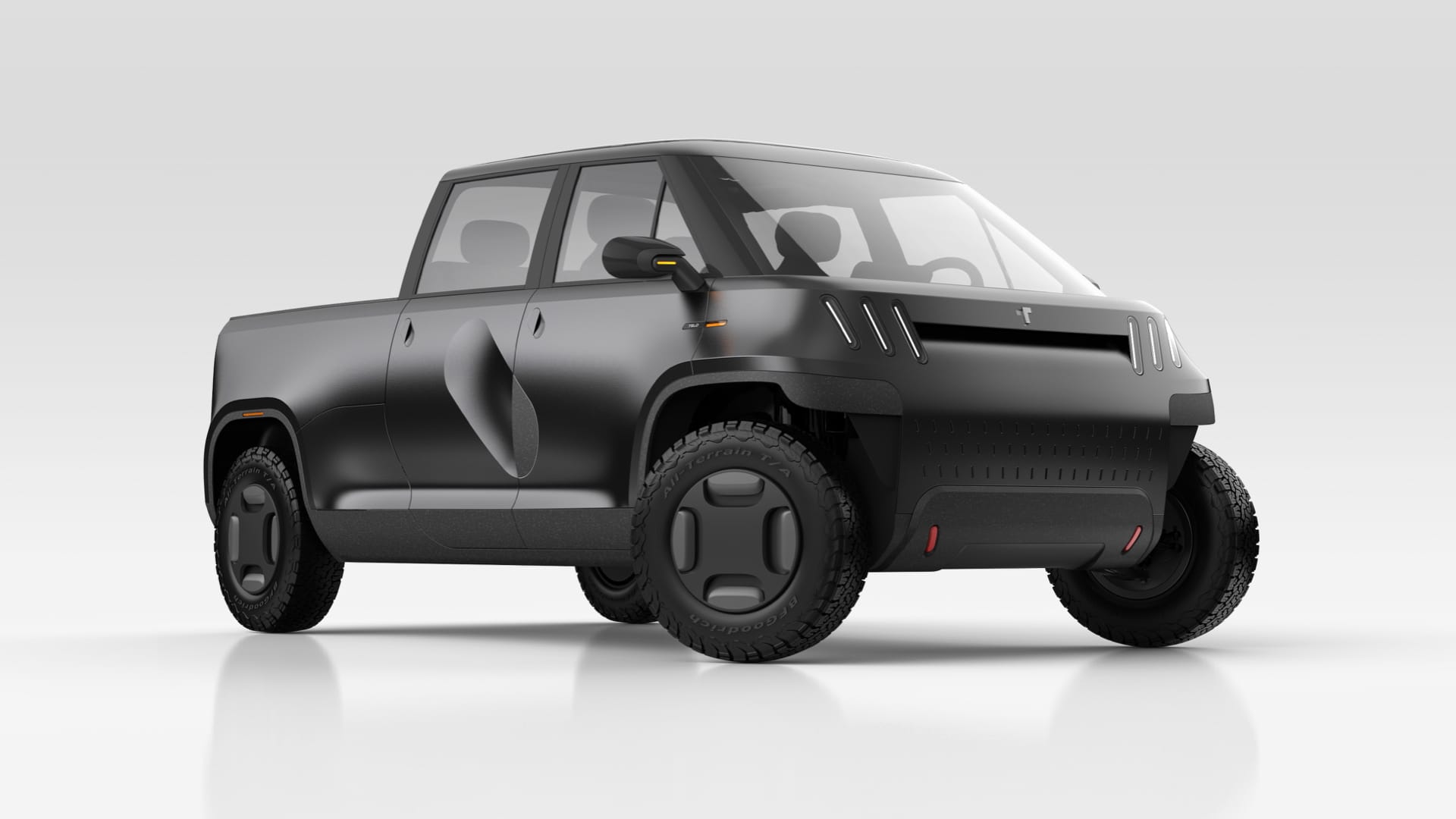
What killed those small pickups wasn't a decline in their popularity, but an unintended consequence of fuel efficiency regulations. While smaller vehicles had to meet steadily increasing requirements, larger "commercial" trucks were largely unregulated. Manufacturers found it easier to make their trucks larger, heavier, and more powerful than to make them more efficient. And as they did, they also made them more expensive, creating the bloated monsters that dominate the market today.
Ford has recently reintroduced the Maverick as a "compact pickup," even though at 200" (5.08m) it's the same size as what was regarded as a full-size truck two decades ago. Sales of that vehicle have exceeded expectations, showing the pent up demand for pickups smaller than the RMS Titanic.
However, the majority of the pickup truck market has moved to a size that evades many regulations by providing consumers with a vehicle at a size that was originally intended for commercial use.
North: That's where all the trucks sit. They've got a truck and a platform that they can produce and not worry about meeting the standards. It's an unintended consequence, but they also discovered a luxury truck market that they didn't really know existed, or how big it was, before.
Those big trucks are not going to go away. Driving one around a city may be, as North describes, "highly stressful and not much fun," but they still have a role performing the kind of task that pickups were intended for in the first place.
"80% of pedestrian deaths are from big trucks"
The growing size of pickups and SUVs hasn't just been costly in terms of the environmental damage these vehicles cause. They're directly responsible for an astounding reversal in safety statistics. They are literally killer trucks.
North: They have these massive hoods, some of them come up above my shoulder. They're a safety nightmare, 80% of pedestrian deaths are from big trucks. If you get hit by one of these big trucks, you are ten times more likely to die in a car accident. It reversed forty years of traffic safety improvements in the United States. For forty years, pedestrian deaths were declining, declining, declining. Then, in 2008, it bottomed out, and now it's higher than it's ever been.
At the same time they're getting larger and more dangerous, their utility has been declining.
North: The funny trend in these big trucks is that their beds have all gotten smaller.
Trucks have turned into massive status symbols. They're very expensive. They're difficult to own and operate. And they're a threat to both pedestrians and other drivers.
Which creates an opening for a vehicle that isn't any of those things. It's not huge. It's nimble and efficient. And protects both those inside and outside the vehicle.
North: A lot of times when you're making a product, a good strategy is to go into a market that doesn't exist. A blue ocean strategy. You can be first into that market and not have any competitors. We're in this really interesting situation where there's this massive hole in the market that for twenty years was the most popular size of truck, and not just doesn't exist for all these weird reasons. Our thesis is that it actually still exists, that people want that vehicle, and we're going to go into that market and find out how big it is.
One thing that could help make consumers more comfortable with the MT1 is a projected range of 350 miles. That puts it above both the CyberTruck (325 miles) and the extended range version of the Ford Lightning (320 miles). North, who worked on battery systems at Tesla, is a big believer that a range is critical in convincing American consumers to shift to electric vehicles.
The small size and clean design of the MT1 make that range possible without trying to squeeze in an enormous, expensive battery. The vehicle is both lighter and more aerodynamic than its bigger competitors. So its efficiency is more like that of an electric sedan rather than a 10,000-pound electric Hummer.
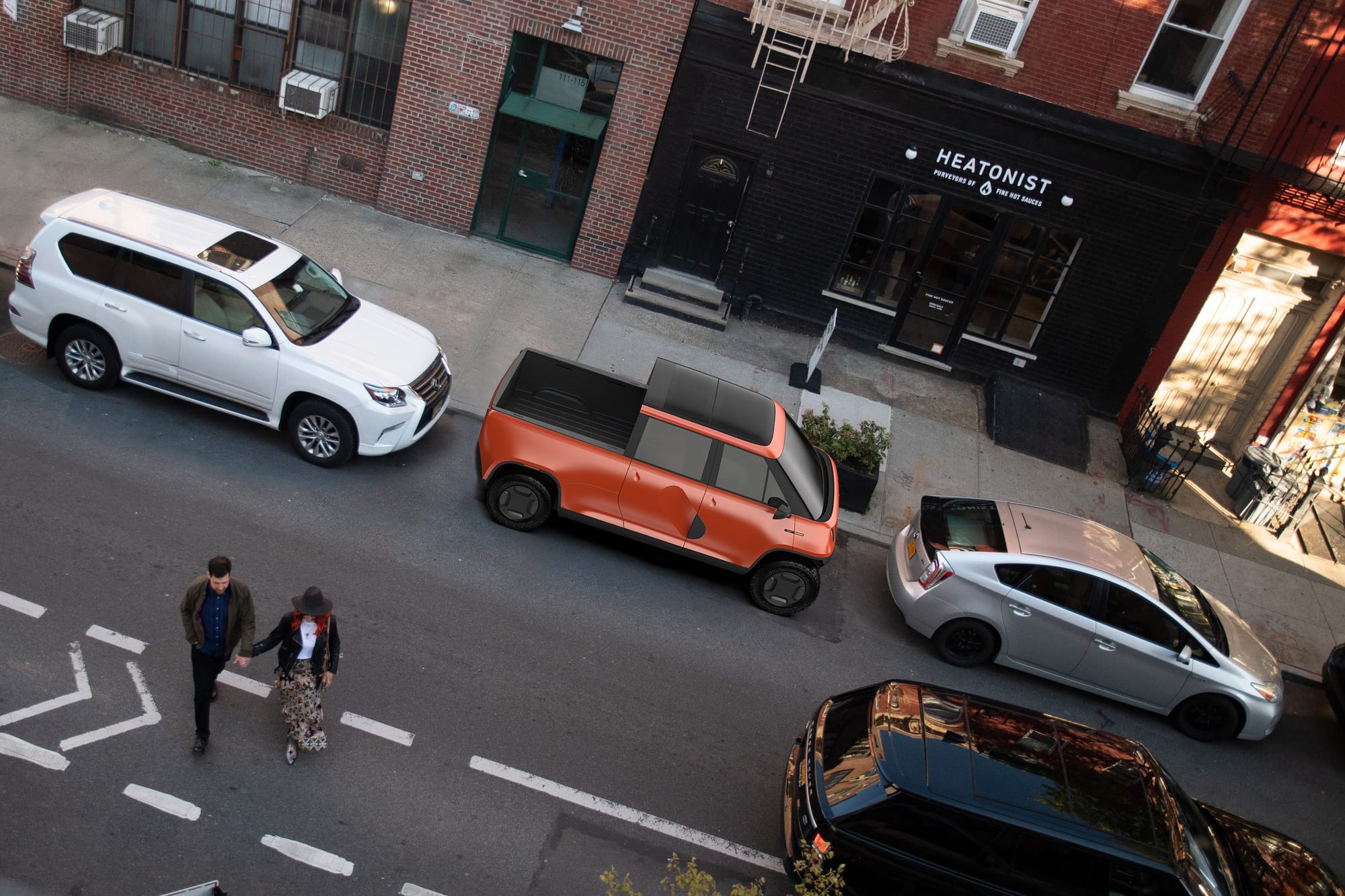
North says they don't expect to see other companies moving rapidly into this space. Instead, they're going to keep trying to market their large pickups while adding EV versions — which won't deliver either safety or efficiency. Other companies, including both EV companies and traditional manufacturers, are likely to stand back for some time and allow TELO to test the water to see if the small truck market is as large as they believe before attempting to introduce their own vehicles.
For now, TELO is working with contract manufacturer Aria to create a small number of test vehicles. Asked where they were on the scale of creating their first designs, to handing over keys to customers, North put TELO right in the middle.
They're very aware of the number of EV startups that have burned their their capital without ever producing a vehicle — or rushed the delivery of a vehicle resulting in a disastrous first impression — and are taking a cautious approach.
There is a long list of reasons why some companies have failed, but one of the biggest is counterintuitive: the easy availability of capital investment for earlier EV startups.
North: In the last financial cycle there was really "free money" so people raised a lot of it, but the problem is that those investors are telling you to run as fast as you can ... and a lot of decisions were made very quickly. Companies were flooded with hundreds of millions of dollars, and what they start doing is hiring managers below them, and managers below them — they're throwing money at the problem to try and get it done quickly. But the problem is, then you're the same as a big manufacturer.
Companies that ramp up quickly from a handful of employees to hundreds or thousands end up with all the problems of organization and communication that can be even worse than older companies. Many of those cash-rich startups also tried to become major players overnight, investing hundreds of millions in things like steel tooling designed to crank out parts in high quantities, when much cheaper options were available to meet their needs.
TELO isn't trying to become GM or Tesla in a day. They're concentrating on investing only in what's required to move to the next step, even if that means some decisions need to be reworked in the future.
North: A big part of it is the financial times that you're in. We're in lean times. So we are crawling, then walking, then running. We're not skipping any steps.
Rather than jumping into building massive factories and counting on selling hundreds of thousands of vehicles at a loss, they're focused on developing their company in a way that would see TELO be profitable with sales of as few as 5,000 trucks.
Those first few drivable vehicles should be available in a few months, but those are only designed to give a sense of the final vehicle. They'll still change before the designs are finalized. But just because TELO is being frugal and moving deliberately, that doesn't mean this project is running in "Elon time."
They expect to deliver this vehicle sooner than you might think.
An all-wheel drive, 350-mile range version of the MT1 is currently priced at $49,990. Unlike (ahem) some larger EV manufacturers, TELO is confident they can hold to that price, with hopes of delivering vehicles to customers in the first half of 2026.
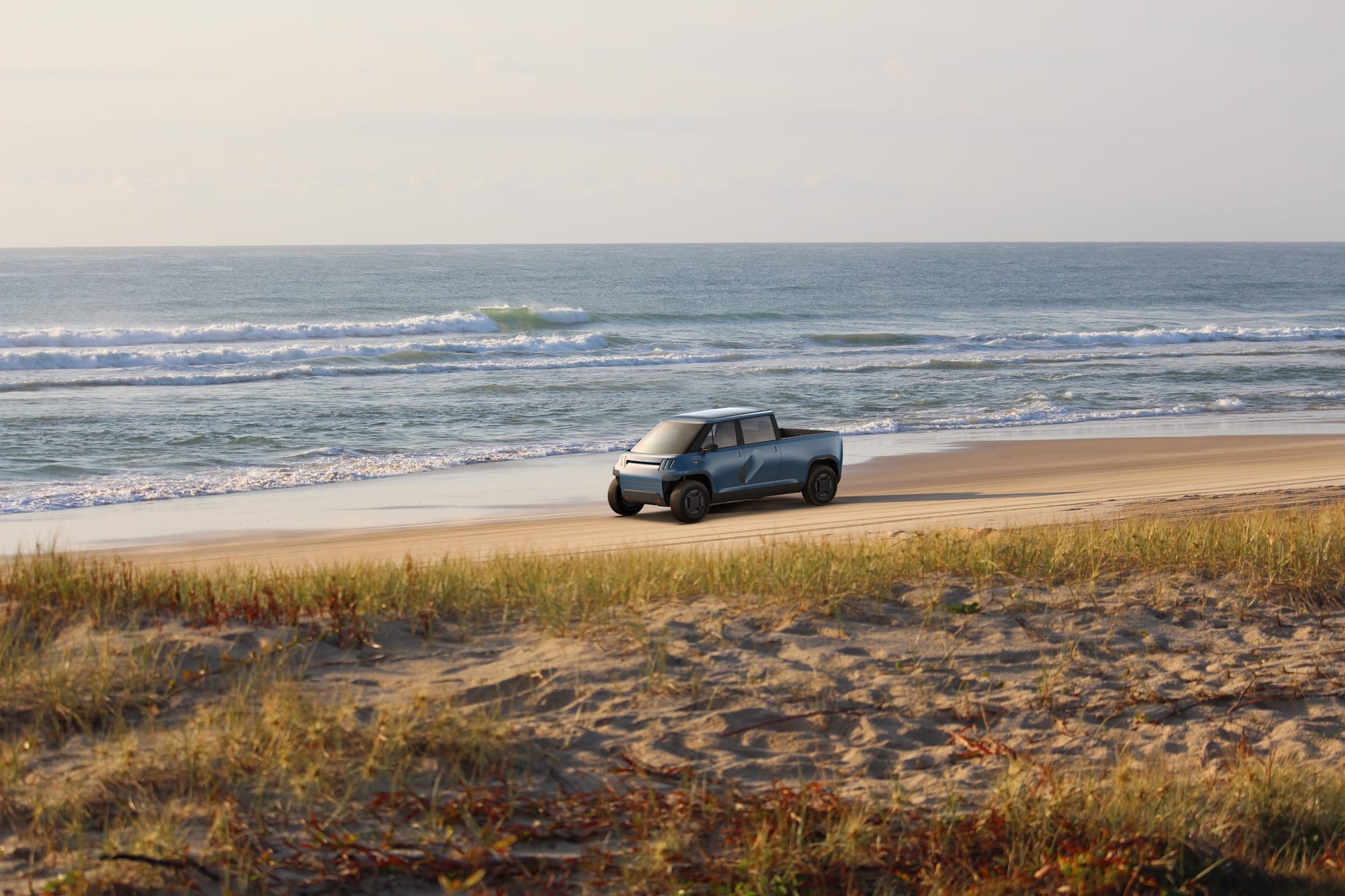

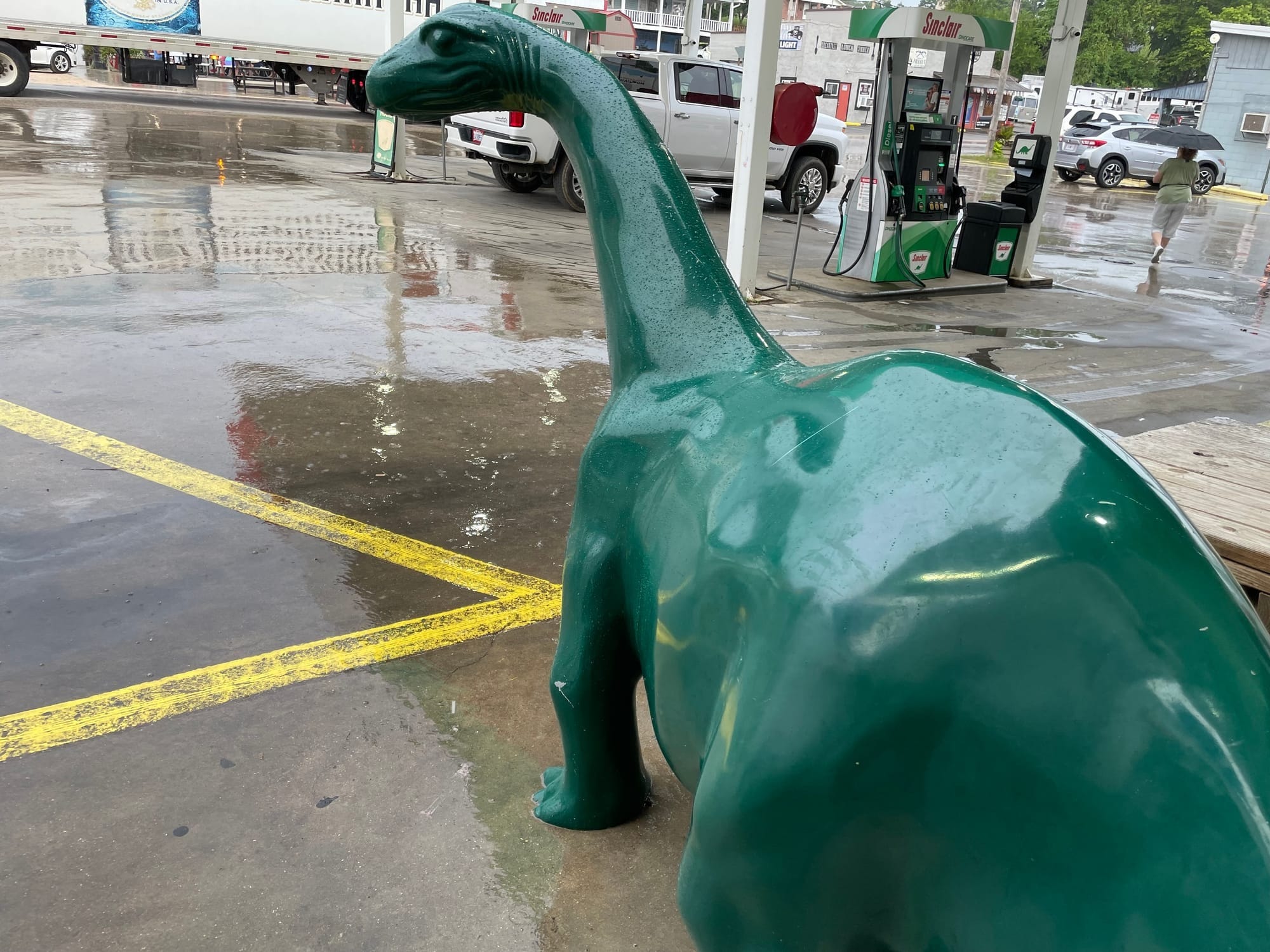
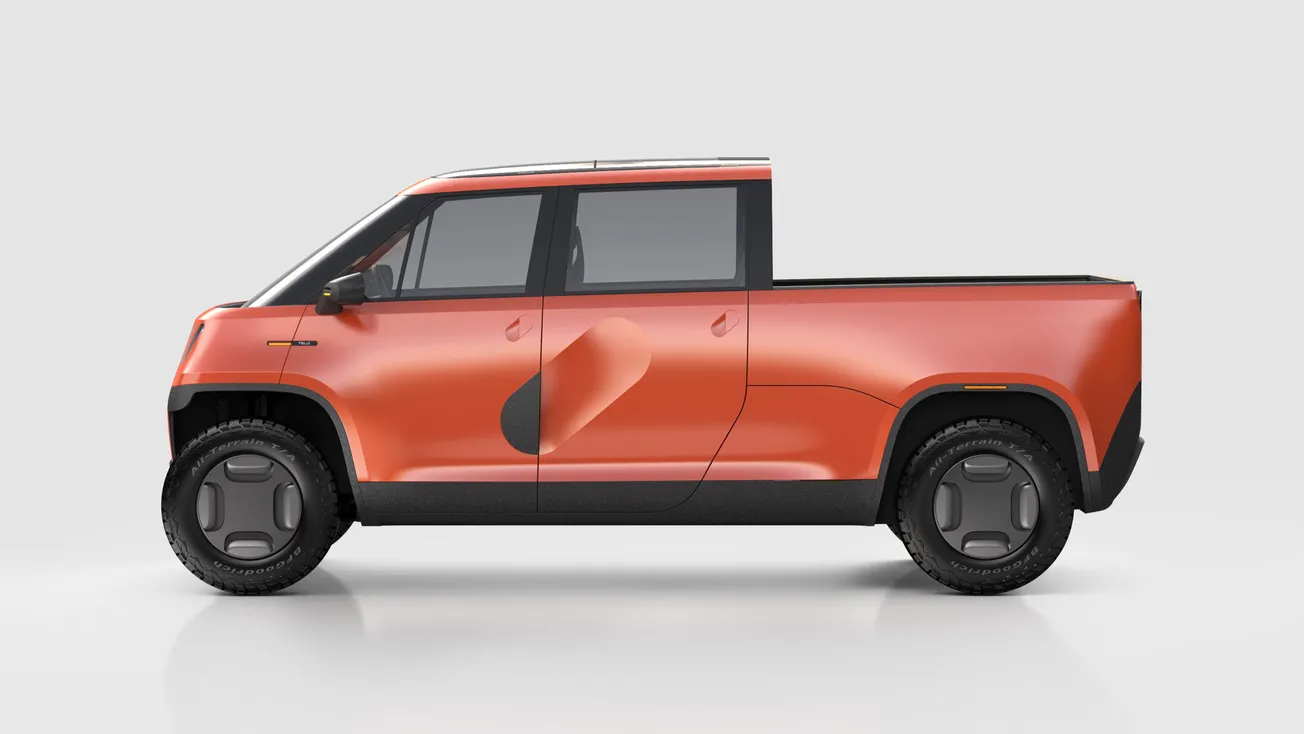










Comments
We want Uncharted Blue to be a welcoming and progressive space.
Before commenting, make sure you've read our Community Guidelines.